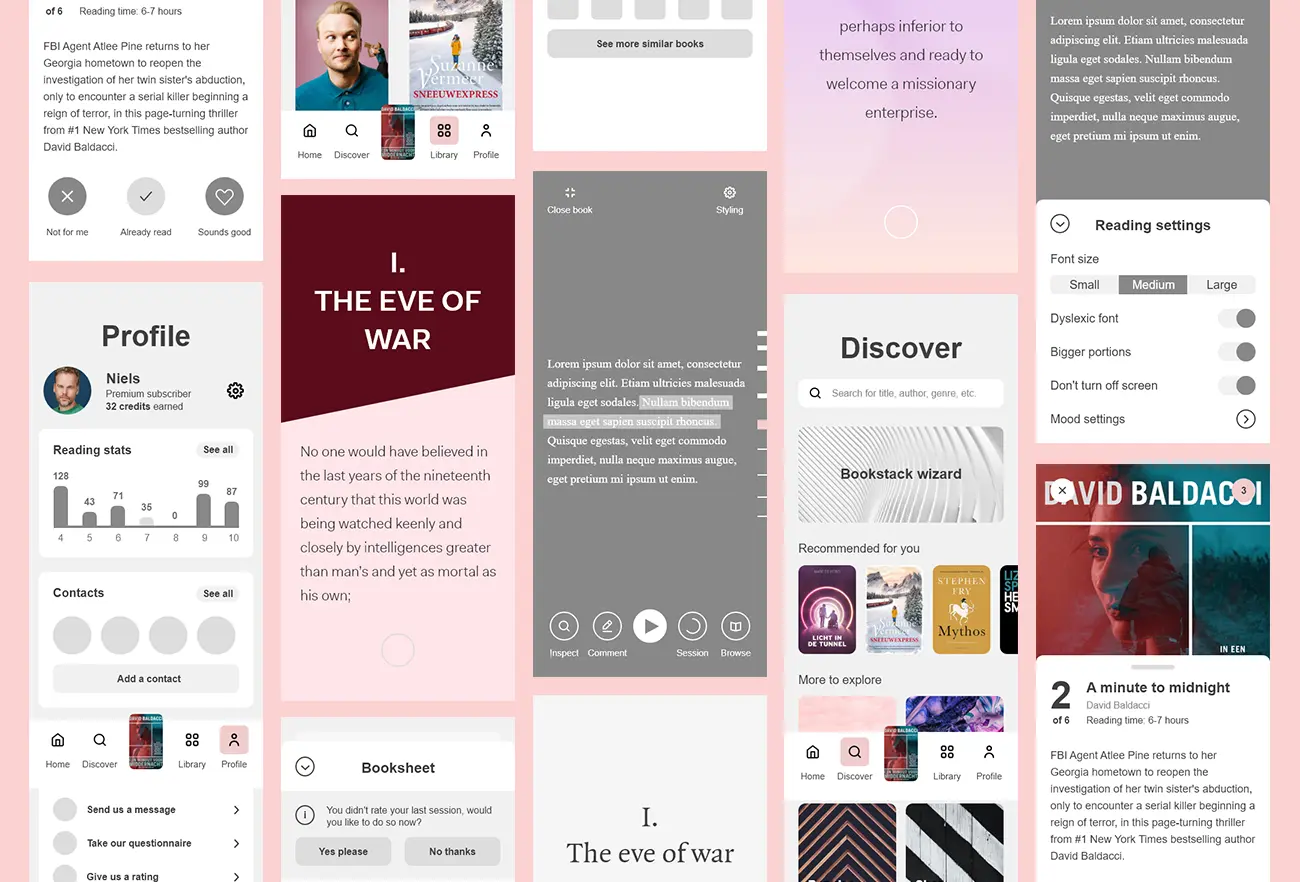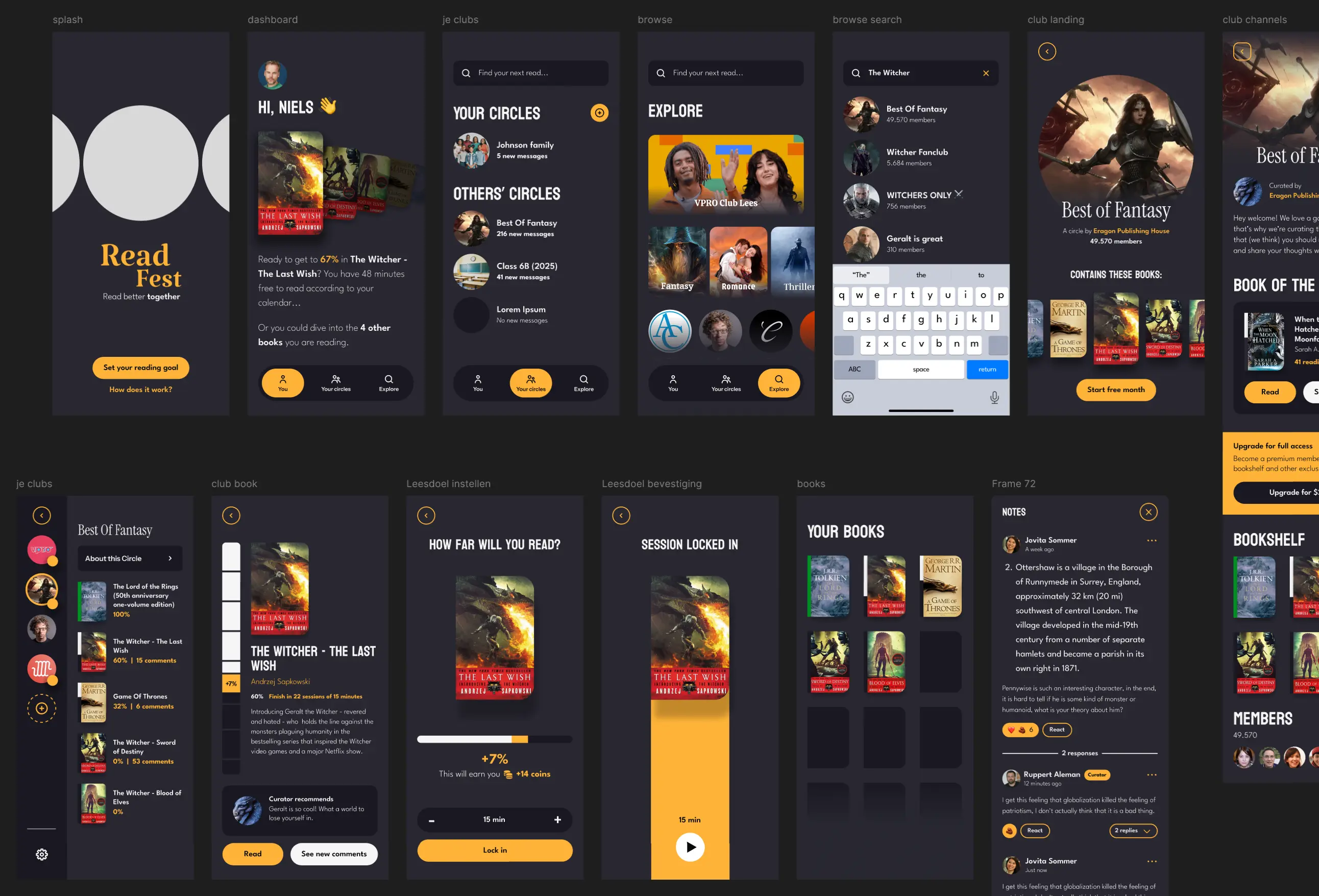Immer is a Dutch startup that wants to revolutionize digital reading. I had the task of translating their product ideas into mockups and prototypes, and helping them develop their branding. Inspired by social media apps and our experiences as game development veterans, we started designing a playful experience that takes existing books further than what a traditional e-reader can do, while enabling you to spend your time more thoughtfully than just endlessly scrolling on Tiktok.
The problem
E-books have been around for a while, but the experience isn't great, and on top of that, there are many social media platforms vying for your attention. Immer wanted to take the strengths of the digital medium, like being able to quickly consume content anywhere, use audio and video, and take advantage of do not disturb modes, and apply that to the static medium of e-books.
The process
The initial version focused on three key concepts:
- Divide pages into snackable 'portions' that look good on a screen.
- Coach users into a reading habit.
- Offer intuitive discovery of new books to read.
We experimented with all kinds of visual styles, from more traditional paper textures to modern fluid looks that combine color and animation. We tested many versions with book fans that had applied to our newsletter, and we settled on a subtle look that had abstract parallax shapes in the background and a relaxing soundscape to help you get immersed.
The initial version also had an experimental 'river' interface; instead of traditional navigation, the app cleverly showed screens the moment they were relevant, so that you would intuitively meander down into a book. While this created a relaxing experience, it was also sometimes hard to go from one end of the app to the other quickly, and got in the way of our ambitions to expand the app's features, so we went back to the drawing table and came up with a more traditional navbar.
We decided to instead innovate on the navigation inside books, and this is where the Book Navigator was conceived of; a way to intuitively jump back and forth in a book and see how far along you are, without losing the context of the words. The whole thing is smoothly operable with your thumb and minimally present during reading.
After several iterations and valuable user feedback, Immer decided to rebuild the reading system to be faster and more extensible, and started licensing it out to other companies.
From there we worked to add more features, most of them focused on social reading (book clubs and classrooms); the ability to make annotations and comments, save highlights, and see how far along your friends are in the same book. This technology is what currently drives the Club Lees app from the VPRO. We're also experimenting with new ways to write stories for this medium that can break free from conventional books.



The result
Immer successfully launched their reading app, where they were able to offer thousands of books thanks to a collaboration with the Centraal Boekhuis. Users were quite enthusiastic about it, and after this successful trial the technology was made available to third parties for licensing. This Immer Reading System SDK is now used in various other reading apps, including VPRO’s Club Lees. Immer continues to add new features to get closer and closer to their original vision. I support them in this by creating wireframes, interactive prototypes, and mockups in Figma.